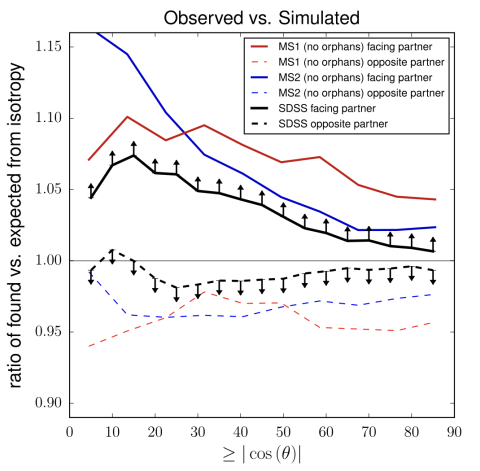
Comparison of the angular distribution of satellites galaxies around paired host galaxies between systems observed in SDSS (black) and two cosmological simulations based on the Lambda Cold Dark Matter Model (red and blue).
My newest article (with Rodrigo Ibata and James Bullock), titled “The Lopsidedness of Satellite Galaxy Systems in ΛCDM Simulations“, has now been published by the Astrophysical Journal. It was motivated by a study by Libeskind et al. (2016) in which they discovered a significant preference of satellite galaxies to lie on the side towards a nearby partner galaxy of their host. For this, Libeskind et al. identified nearby pairs of Milky-Way-like galaxies in the SDSS survey, and then measured the angular distribution of their satellite galaxies relative to the line connecting each pair. After stacking the data of thousands of such pairs, they found that there is up to an 8% excess of satellites in the region pointing to the partner galaxy (black line in the figure). This can be considered a lower limit of the true “lopsidedness” because the satellite galaxy sample is most likely contaminated by more randomly distributed fore- and background galaxies. In my new paper, I performed the first-ever comparison of this observed effect with expectations from cosmological simulations.
